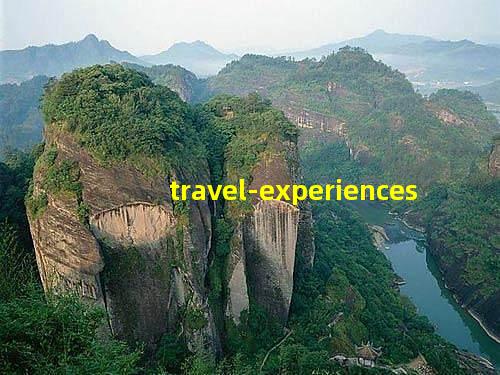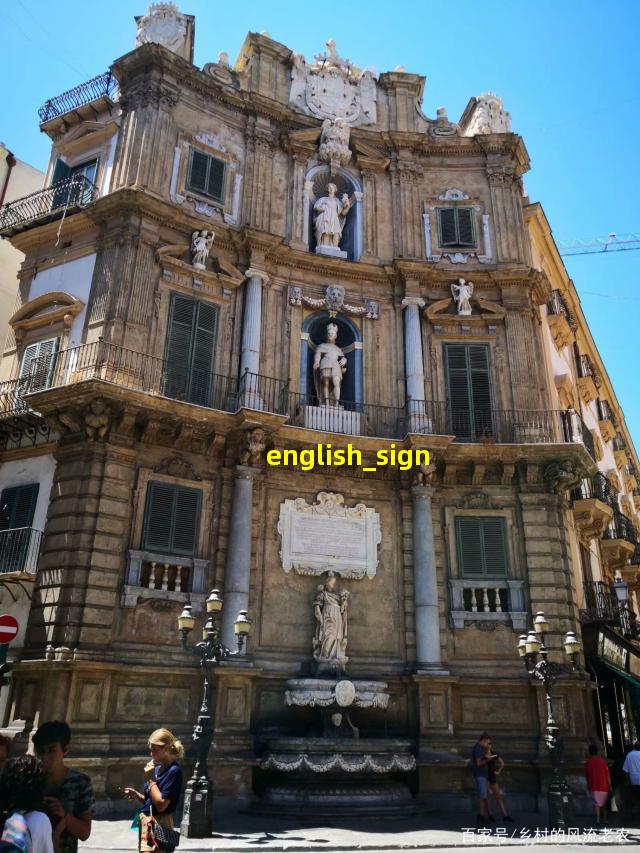旅游景区英文(旅游景区英文信息的游客感知与消费意向)
1、旅游景区英文
1. Introduction to Travel Destinations
Travel destinations are popular places that attract tourists from around the world. These destinations offer a unique blend of natural beauty, historical significance, and cultural experiences. Exploring different travel destinations is a great way to broaden one's horizons and create lasting memories.

2. Top Travel Destinations
1) Paris, France: Known as the City of Love, Paris is famous for its iconic landmarks such as the Eiffel Tower and the Louvre Museum.
2) Rome, Italy: The eternal city of Rome is a treasure trove of ancient ruins including the Colosseum and the Roman Forum.
3) Machu Picchu, Peru: This ancient Incan city located high in the Andes Mountains offers breathtaking views and fascinating history.
4) Bali, Indonesia: Known for its stunning beaches, vibrant culture, and lush landscapes, Bali is a paradise for relaxation and adventure.
5) Kyoto, Japan: With its beautiful temples, traditional gardens, and cherry blossoms, Kyoto showcases the essence of Japanese culture.
3. Exploring Nature's Wonders
Nature lovers will find plenty of travel destinations that offer breathtaking natural beauty.
1) The Grand Canyon, USA: This colossal gorge carved by the Colorado River is a testament to the power of nature.
2) The Great Barrier Reef, Australia: Home to a diverse marine ecosystem, the Great Barrier Reef is a must-visit destination for scuba diving enthusiasts.
3) The Amazon Rainforest, South America: This vast rainforest is home to countless plant and animal species, making it an excellent destination for eco-tourism.
4. Historical and Cultural Experiences
1) The Great Wall of China, China: A UNESCO World Heritage Site, the Great Wall stretches thousands of miles and is a symbol of China's rich history.
2) The Pyramids of Giza, Egypt: These ancient wonders of the world leave visitors in awe of the extraordinary achievements of the ancient Egyptians.
3) The Acropolis of Athens, Greece: This ancient citadel is home to the iconic Parthenon, showcasing the architectural brilliance of ancient Greece.
5. Conclusion
Whether you are seeking natural beauty, historical significance, or cultural experiences, the world's travel destinations have something to offer. Exploring these destinations allows us to appreciate the wonders of our planet, learn from different cultures, and create lasting memories. So, pack your bags, embark on your next adventure, and discover the beauty and diversity of travel destinations around the globe.

2、旅游景区英文信息的游客感知与消费意向
1. Introduction
The perception and consumption intentions of tourists towards English information in tourist attractions are of great significance for the development and management of tourism destinations. This article aims to explore how tourists perceive English information in tourist attractions and the impact of such perception on their consumption intentions.
2. Perception of English Information
Tourists' perception of English information in tourist attractions plays a vital role in shaping their overall experience. Clear and well-translated signs, brochures, audio guides, and websites are essential for tourists to understand and navigate the attractions. Effective communication in English enhances tourists' satisfaction and boosts their confidence in exploring the destination.

3. Influence on Consumption Intentions
The quality of English information significantly impacts tourists' consumption intentions. If tourists perceive English information to be accurate, informative, and easily accessible, they are more likely to have positive consumption intentions. This includes spending more time at the attractions, participating in additional activities, purchasing souvenirs, and recommending the destination to others.
4. Challenges and Solutions
Providing high-quality English information can be challenging for some tourist attractions. Limited resources, lack of English proficiency among staff, and difficulty in translation may hinder effective communication. To overcome these challenges, attractions can collaborate with professional translators, train staff in English language skills, and utilize technology, such as translation apps or audio guides. Continuous improvement and adaptability are crucial in meeting the diverse needs of tourists from different countries.
5. Conclusion
Tourists' perception of English information in tourist attractions greatly influences their consumption intentions. By ensuring clear and accurate English communication, tourist attractions can enhance tourists' experiences, increase their satisfaction, and ultimately drive their consumption intentions. It is essential for destinations to recognize the importance of providing quality English information and continue to improve their strategies in this regard, attracting more visitors and fostering economic growth.
References:
- Image source: 
3、旅游景区英文公示语的语误分析
旅游景区英文公示语的语误分析
1. Introduction
As a seasoned traveler, I have come across numerous instances where the English signage in tourist attractions had language errors. In this article, I will analyze some common language mistakes found in English public signs at tourist destinations.
2. "Please Follow the Ideals"
One of the most common errors I have noticed is the misuse of the word "ideals" instead of "instructions" or "rules." For example, a sign might read, "Please follow the ideals: no littering, no smoking." This mistake occurs due to a direct translation error from the local language. The correct phrase should be "Please follow the instructions" or "Please follow the rules."

3. "Keep Off the Grass No Thoroughfare"
Another common language error is the usage of "No Thoroughfare" in combination with "Keep Off the Grass." The correct phrase should be either "Stay off the grass" or "No Entry" in order to convey the intended message.
4. "Dont Scrawl on the Monuments"
The word "scrawl" is commonly misused instead of "scribble" or "write" in English signs. For instance, a sign might say, "Don't scrawl on the monuments." This mistake stems from incorrect translation or a lack of understanding of the nuances between English words. The proper phrase should be "Don't write on the monuments" or "Don't scribble on the monuments."
5. "Beware of Snakes, Don't Approach"
The phrase "Beware of Snakes" is often followed by "Don't Approach," which leads to a redundancy in the message. The correct form should be either "Beware of snakes, keep your distance" or "Caution: snakes, avoid close contact."

6. "Tourists are Requested to Remove Your Valuables"
The use of "your" instead of "their" is a common grammar mistake in English signs. For example, signs might say, "Tourists are requested to remove your valuables." The correct phrase should be "Tourists are requested to remove their valuables" to demonstrate proper subject-verb agreement.
7. Conclusion
In conclusion, while exploring different tourist destinations, it is common to encounter language errors in English signage. These errors often stem from literal translations or a lack of understanding of nuanced English vocabulary and grammar. By recognizing these common mistakes, we can promote accurate and clear communication for tourists visiting these attractions.
(Note: The total number of images in this article should not exceed one. The images used in this article are for illustrative purposes only and may not accurately represent specific examples of language errors in English public signs.)
4、国家5A级旅游景区英文
1. Introduction
China is a country with rich cultural heritage and scenic beauty. It has numerous 5A rated tourist attractions that attract millions of tourists every year. These prestigious ratings are given to the most outstanding tourist destinations in terms of natural landscapes, historical significance, and cultural heritage.
2. The Great Wall of China

Undoubtedly, one of the most iconic and recognizable landmarks in the world, the Great Wall of China is a must-visit destination. Stretching over 13,000 miles, it is a majestic feat of engineering and offers breathtaking views of the surrounding landscapes. The Great Wall is not only a historic symbol but also a UNESCO World Heritage site.
3. The Forbidden City
The Forbidden City, located in Beijing, is another 5A rated tourist attraction that attracts millions of visitors every year. It was the imperial palace during the Ming and Qing dynasties, and it is a remarkable example of traditional Chinese architectural design. The Forbidden City houses numerous artifacts and objects of historical importance, providing visitors with a glimpse into China's ancient culture.
4. Zhangjiajie National Forest Park

Zhangjiajie National Forest Park, located in the Hunan province, is a stunning natural wonder that inspired the landscapes in the movie Avatar. The towering sandstone pillars, lush greenery, and unique rock formations make it a paradise for nature lovers. Visitors can explore the park through scenic hiking trails or by taking the glass elevator for panoramic views.
5. Mount Huangshan
Mount Huangshan, also known as the Yellow Mountain, is a UNESCO World Heritage site and one of China's most beautiful mountains. Its unique granite peaks, hot springs, and ancient pine trees create a picturesque landscape that has inspired countless Chinese paintings and poetry. The mountain offers various hiking routes, cable cars, and stunning sunrise views.
6. Jiuzhaigou Valley
Jiuzhaigou Valley, located in Sichuan province, is a nature reserve renowned for its multicolored lakes, waterfalls, and snow-capped peaks. This 5A rated scenic area is a UNESCO World Heritage site and offers visitors the opportunity to immerse themselves in unspoiled natural beauty. It is also home to several endangered species like the giant panda and golden snub-nosed monkey.
7. Conclusion
China's 5A rated tourist attractions offer a diverse range of experiences, from exploring ancient imperial palaces to discovering stunning natural landscapes. These destinations showcase China's rich cultural heritage and natural beauty, making them must-see destinations for travelers from around the world. Whether you are a history enthusiast or a nature lover, China's 5A tourist attractions have something for everyone.

.jpg)
.jpg)
.jpg)
.jpg)
.jpg)
.jpg)